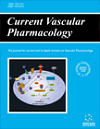-
oa Editorial [Hot topic: An Update on Venous Thromboembolism in Trauma, Orthopaedic and Reconstructive Surgery (Guest Editors: Peter V. Giannoudis and Panayotis N. Soucacos)]
- Source: Current Vascular Pharmacology, Volume 9, Issue 1, Jan 2011, p. 1 - 2
-
- 01 Jan 2011
- Previous Article
- Table of Contents
- Next Article
Abstract
Venous thromboembolism (VTE) including lower limb deep vein thrombosis (DVT) and pulmonary embolism (PE) remain important causes of peri-operative morbidity and mortality. This is particularly true following major lower limb and pelvic procedures. Pathogenesis is multi-fold and relates to intra-operative physical venous occlusion, direct and indirect damage to vessel walls and generalized activation of the coagulation cascade secondary to surgical trauma [1]. Historical studies suggest that without thromboprophylactic protection, such events are extremely common post-operatively, with reported rates of DVT as high as 70% [1, 2]. These figures vary greatly however, and appear to be significantly influenced by a variety of factors. For example, the very low rates reported in Asian studies suggest that ethnicity and genetic predisposition may play a major role [3- 5]. Whilst it has been demonstrated that a large number of orthopaedic patients develop calf vein thrombi intra-operatively, the vast majority of these appear to resolve spontaneously without clinical consequence, removed by the body's inherent fibrinolytic system [6]. It would appear that in only a small number of patients do these blood clots propagate causing obstruction of local vasculature or pulmonary embolism. Reported rates of fatal PE are very low, probably less than 0.5% even in those not receiving thromboprophylaxis, suggesting that small venous thromboses may not be as important as has previously been suggested [7, 8]. In patients receiving perioperative low molecular weight heparin (LMWH), radiologically determined rates of DVT remain as high as 13% following hip and 38% following knee replacement. Similar to the pattern seen in unprotected patients, the incidence of clinically significant thrombosis appears to be far lower than this, probably less than 1%. Though rates of fatal pulmonary embolism remain low they are little reduce from those seen in unprotected patients [8, 9]. The use of radiographically determined thrombosis as a surrogate end-point for clinically relevant VTE (pulmonary embolism or post-phlebitic limb) in many studies makes the literature difficult to interpret and has more recently been criticized. Furthermore, the majority of clinically significant thrombotic events appear to occur following discharge from hospital, calling into question our understanding of the natural history of the condition and current thromboprophylaxis protocols which are for the most part in-patient only [10]. This has lead to increasing interest in the concept of prolonged post-discharge therapy. The parenteral route of administration for LMWHs and regular testing required for Warfarin make this approach potentially troublesome. More recently however, several new oral agents have been introduced that require no laboratory monitoring in order to maintain safe levels of anticoagulation and it may be that these prove to be a solution to this problem [11-14]. As with any new intervention, the financial and clinical implications of such an approach must be carefully considered prior to widespread implementation. Therefore, despite extensive study of the subject and the publication of multiple guidelines, understanding of post-operative VTE is far from complete and opinion as to the optimum prophylactic regime remains divided. Attempts to introduce national protocols have proved controversial with some parties feeling that the suggested treatments are excessively expensive and introduce a disproportionate risk of complication given the actual clinical risk presented by VTE [15, 16]. This special supplement is intended as an update on current concepts in this field. It contains review articles, original data and meta-analysis including papers discussing the use of fondaparinux, evidence for the use of low molecular weight heparins in orthopaedic practice, the timing of chemical thromboprophylaxis, potential targets for a new generation of anti-coagulants as well as current evidence for thromboprophylaxis following bilateral total hip replacement, total knee replacement, pelvic trauma and noncardiac vascular surgery. It should provide evidence to support decision making in this area and useful information regarding potential future avenues of development.


